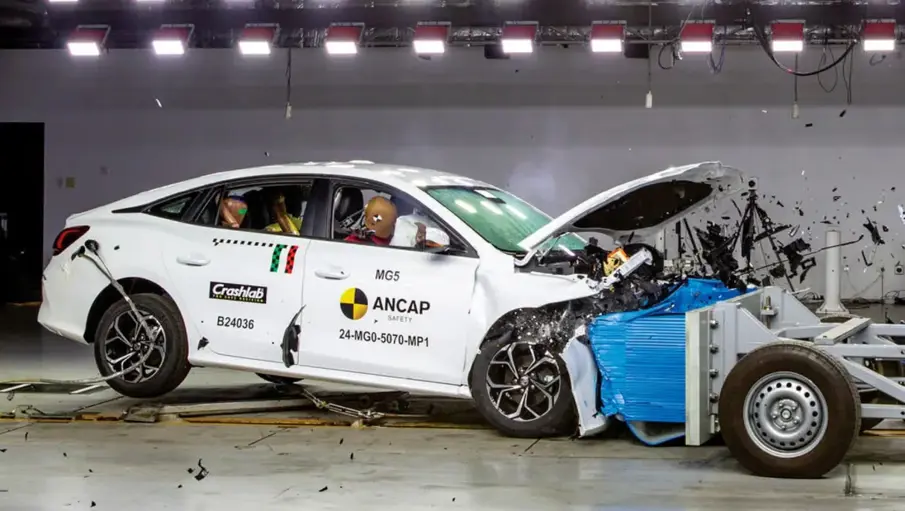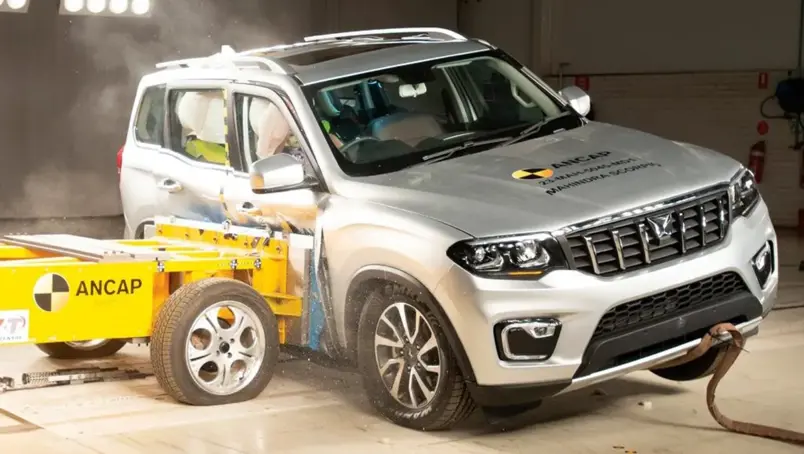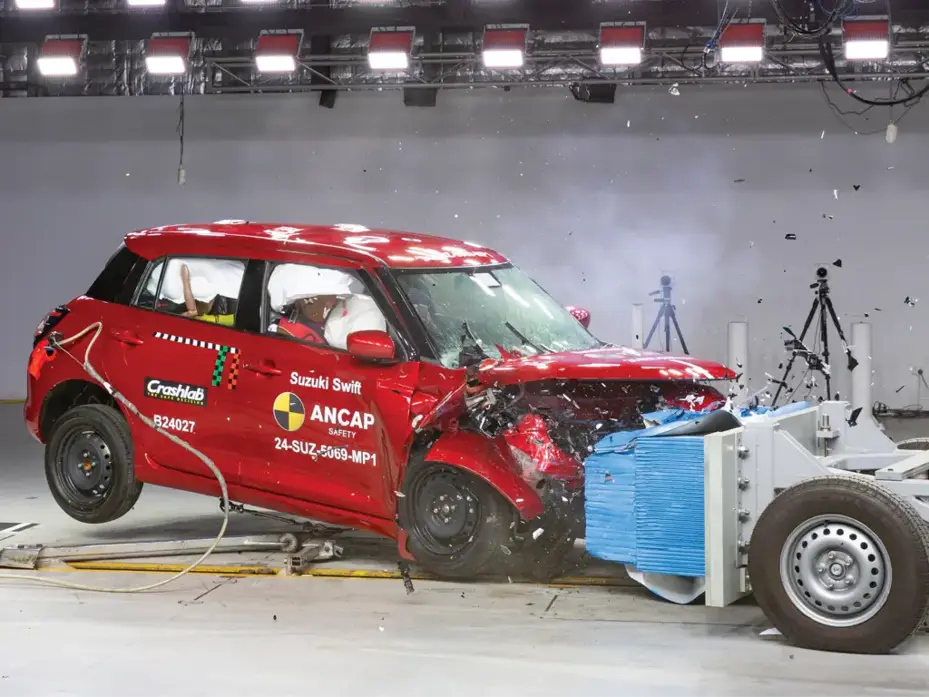- Safety body points to Chinese brands that score five stars without adding costs.
- Chinese brands now account for the most five-star ratings since 2023.
- ANCAP won't back away from ratcheting up its standards every few years.
The Australasian New Car Assessment Program's (ANCAP) Chief Executive Officer Carla Hoorweg said criticism of its testing protocols was expected given how competitive our new car market now is.
Hoorweg added criticism of ANCAP was arguably not just due to established manufacturers having to stump up for increased costs or decreased star ratings, but also because an increasing amount of new five-star ANCAP scores were being achieved by newcomers to the market from China, which were already putting price pressure on rivals.

New cars built in China now account for the most new five-star ratings since 2023, accounting for 32 per cent of all new five-star rated models. In comparison, cars sourced from Japan and Germany have shrunk to 19 and 18 per cent respectively.
82 per cent of cars put to the test from Japan have a five star rating, while 94 per cent of cars sourced from Germany have a five-star rating. Cars sourced from China are holding an 86 per cent five-star rating from 2023.

“It’s disappointing because we know those brands can deliver five star products, so we hope they’re trying to bring those vehicles in. It is a competitive market though, so obviously they’re going to try to change the playing field. [Criticism] is one way they try to do that."
The safety authority has been accused of effectively stopping manufacturers from bringing in more affordable cars or versions of cars built in markets with lower safety requirements due to its ever increasing safety standards, which Hoorweg agreed was a source of frustration for manufacturers.
“It’s true, they wouldn’t be as safe,” she said. “We exist to say, 'you can bring that ASEAN version, but it’s not as safe and it’s not what consumers expect'.”
One recent notable example affected by both a potentially low ANCAP score and an increase to Australia’s base new-car safety standards in the Australian Design rules, is Mitsubishi’s ASX successor. If it weren't for ANCAP safety standards the hybrid XForce small SUV sold in right-hand drive for Thailand, Malaysia and Indonesia could have made it Down Under.
Mitsubishi has been forced to import an ASX based on the Renault Captur from Europe, which will be much more expensive than the outgoing version. Mitsubishi cited high development costs to upgrade the XForce for ruling it out.

Some new vehicles that have received less than five-stars in recent years include the new Suzuki Swift that got one star due to poor crash performance. The Hyundai i30 sedan got three stars for the lack of advanced auto braking and blind spot monitoring as standard as well as poor vulnerable road user protection. The Mahindra Scorpio 4x4 and MG5 sedan both scored zero stars for poor occupant protection and missing key active safety equipment.
MG said it was able to bring its cars in at a lower price by not including all the required active safety equipment, while Mahindra argued its 4x4 comfortably met Australian Design Rules and was rated highly by the far more lenient Global NCAP, which focuses mainly on basic features and structural crash performance.
Hoorweg said some manufacturers would rather challenge the existence of ANCAP altogether, or criticise its messaging, as its increasingly harsh safety standards factor into these new model choices, but the reality is prices ultimately stabilise as companies package together various key technologies.
“A lot of arguments get run, but there’s a lot of components which go into a vehicle and there’s a lot which goes into the cost of the car," said Hoorweg.
“Safety is one element but what we see is the unit cost goes down, so when a new technology is coming through for the first time it has an expensive per unit cost but that decreases over time and things get bundled together so it decreases [further].

“We’ve seen the real cost of a vehicle which factors in what you’re actually getting. The cost has stuck around $25,000 for a very long time, but what you’re actually getting is a lot more, so the real cost to the consumer has actually decreased. Manufacturers have actually done a great job of keeping those prices that low for a very long time, but we don’t want to see safety be the element that gets blamed for that [increasing],” she said.
Hoorweg noted calls to simply allow ratings to fall back to those from vehicle’s home countries or ratings out of Europe would result in some trying to take advantage of the lack of local standards.
“There’s a huge opportunity to de-spec cars due to the differences between ADRs and European design rules,” she said.
Hoorweg pointed to the Suzuki Swift as being a prime example of a car, which had alarming omissions in the specification delivered to Australia, that resulted in its one-star ANCAP score and three-star EuroNCAP score.
Hoorweg added the language on five-star-or-nothing may have been softened a little, the body wouldn't back down on ratcheting standards up every few years, with a new framework starting in January 2026 focusing more heavily on driver assist systems and post-crash survivability.
"I think there’s enough consumer support and fleet support that there’s not much interest in dropping standards." she said.
Even the Kia Tasman, which just received a five-star ANCAP rating was notable for the rating only applying to variants equipped with a unique bumper designed to maximise pedestrian safety. High-grade models likely to be popular with private buyers, like the top-spec off-road focused X-Pro are specifically excluded from the score.
- Tom White, deputy news editor.





